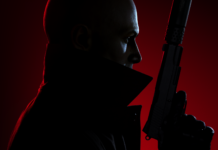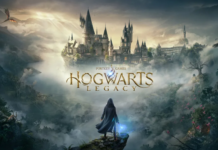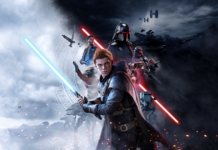You probably expect me to
open this review with a statement about how the series made its grand return in
2002. You’re half-right. While I’m not going to actually come out and say it,
I did manage to sneak the comment in there (hehe).
Mortal Kombat: Deception
is exactly what it looks like. It’s the sequel to Deadly Alliance and is short
on innovation but big on new features and characters. It’s bloodier and has
more fatalities. The new self-sacrifice moves would create a huge controversy
if we were still in the 90s.
That, my bloodthirsty
friends, is what Mortal Kombat is all about.

Deception does not
deceive when it comes to new characters and fatalities. A dozen kombatants
await the selection of eager gamers, while another 12 fighters are waiting to be
unlocked. Each character has two fatalities, one Hara Kiri (self-sacrifice)
move, and several stage kills. Add it all up and you have more than 60
different ways to kill your opponent (or yourself) in the game!
Although I’m sure most of
you know this by now, just to clarify, the Hara Kiri moves are intended to be an
insult to your opponent. You’ve lost. You’re about to be finished in a brutal,
disgusting (and possibly comical) way. There’s nothing you can do to stop this
from happening…except kill yourself!
Kill yourself by entering
a fatality-style code. Your fighter will break his own back, his own head,
etc., anything to prevent the opponent from having the pleasure of finishing you
off. This is a great addition, but I can’t help but think how rewarding it
would have been to have this move in an arcade version. Imagine the look on
arcade junkies’ faces when you perform this move – they’d hit the machine, say a
few choice words and storm off. Ahhhh, memories.
With 24 open character
slots, Ed Boon and his team had a lot of space to fill. As a result players get
several of their Deadly Alliance favorites (Raiden, Scorpion, Sub-Zero, etc.),
several of their MK2/MK3 favorites (Kabal, Sindel, Liu Kang, etc.), and several
new fighters that are not at all unlike those you’ve already mastered.
Kabal’s return is a grand
one. I can’t tell you how cool it is to be able to play as him again, and for
the first time in polygons. Cyrax is gone, but in his place you get the
unbeatable duo of Smoke and Noob Saibot.
Combos and projectiles
are in heavier supply this time around, putting the game somewhere between MK2
and MK3. The 3D movement still feels like Soul Calibur, but the speed has not
been increased. Personally I wish it had been. Deception could be perfect if
it were just a little bit faster (and if the fighters stayed in the air longer.
When I uppercut, I want my opponents to stay up!). It’s still an extremely
entertaining game. I won’t memorize the fatality/Hara Kiri list for at least a
month. It’ll take me even longer to master every move and combo. Every moment
that I spend trying to master these elements will be a joyous one. There are
few fighting games that are as rewarding as Mortal Kombat.
Some might think that
Tecmo invented the multi-tiered stage with Dead or Alive. True, it was the
first 3D fighter to use multi-tiered stages. But Mortal Kombat 3 was the first
fighter of any kind to have multi-tiered stages. Time limitations prevented
them from being in Deadly Alliance, but that makes having them in Deception even
sweeter. The artistic design is striking, and the crazy, over-the-top
interactivity will have gamers laughing and cringing at the same time. Your
fighters will feel pain, that is for certain.

Multi-tiered stages means multi-tiered fun!
Many of the stages have
unofficial stage fatalities. Oh look at that, a lava press! I’ll just push my
opponent into it and…oops, now he’s turned to something less than ashes.
Skilled (or cheap or just
plain lucky) players can use these stages to end the battle quickly. This adds
a whole new dimension of strategy to the game that was never there before. This
is perhaps the series’ biggest innovation in years. You could kick the crap out
of your opponent and be close to a flawless victory, then get thrown into the
spike compactor and die instantly. There are no Hara Kiri moves to save
yourself from the humiliation of a stage kill.
In a strange twist that
only Mortal Kombat would take, Deception features two all-new mini-games: Chess
Kombat and Puzzle Kombat. Each of these games features characters that attack
each other as you execute a move (ex: eliminate a few blocks and watch your
fighter go nuts). They even use fatalities!
As wonderful as the game
is, Mortal Kombat: Deception does have one major flaw: its Konquest mode. It’s
supposed to be MK’s answer to a story/training mode, and just like the first
game you need to play it to unlock new fighters.

There are a lot of
reasons to dislike the Konquest mode and very few reasons to like it: the story
is weak, the training is unnecessary, the battles are boring, and the
voice-overs are horrendously cheesy. At its core, the Konquest mode isn’t much
different from the first game. This time you have to put up with a 3D world map
and lots of sleep-inducing character interaction. As one of the series’ biggest
supporters, I can say with the utmost certainty that this is not what gamers
want.
In this respect, Def Jam
Fight For NY is the superior game.
If you could I’d say skip
the Konquest mode and enjoy the rest of the kontent, but doing so will limit you
to 12 of the 24 playable characters.
It’s almost ironic when
you think about it. Mortal Kombat used to tell its player to “test their might”
and endure severe trials.
Can you endure this one?
Is it really worth your time? As uninviting as it may seem, the Konquest mode
only happens once. When you beat it, it’s done. Your victory will be saved as
long as you have your memory card file. The one-on-one battles that you have
with your friends – those can continue forever with as many of the characters as
you like. Choosing between a little torture and a lot of fun or no torture and
no fun, I’d choose the former. The game is worth it.
|
|
Gameplay: 8.7
Mortal Kombat:
Deception comes in two parts: one extremely good and capable of providing months
of entertainment with real-life opponents. The other part is for the
single-player only, is not overly entertaining, and doesn’t have much to do with
Mortal Kombat. Players will be forced to play the second part (the Konquest
mode) if they want to get the most out of the stellar kombat. New characters
can’t be unlocked without finishing the Konquest mode. That’s definitely
something to get miffed about.
It’s hard to though.
It’s hard to be mad at a game that excels in the aspect that it should:
two-player, side-by-side kombat. I’ll never understand or be accepting of the
Konquest mode, but that hasn’t stopped me from playing the game with friends.
Mortal Kombat ruled
arcades in the early 90s for a reason, one that’s quite prevalent here. The
character lineup, new fatalities, Hara Kiri and combo moves make Deception the
most comprehensive Mortal Kombat game yet. Mortal Kombat 3 invented the
multi-tiered fighting stage, so it was great to see them return in this game.
No rehashes either – these stages are brand-new and they all look great.
As someone who grew up
with Mortal Kombat, playing this Deception serves to rectify old memories while
satisfying the current need for an outrageous fighting games. It’s the most
gruesome game in the series, but the realism is still lacking. Would a true MK
fan have it any other way?
Graphics: 9
Gorgeous
backgrounds that change on-the-fly; worlds with immense size and unique breaking
points; stage fatalities that throw more red polygons on screen, etc., etc.!
Deception isn’t the most realistic-looking fighter on the planet, but it’s
definitely the most fun to watch.
Sound: 9
Dark, moody, and
perfect for this time of year, Deception will engross, entrance and entertain
all who take the time to listen.
Difficulty: Medium
A slight step up
from Deadly Alliance. Chances are you’ve mastered that game by now. The new
moves, fatalities, etc., will keep you busy no doubt, but there’s not a learning
curve involved. Deception is Deadly Alliance with more bloody goodness.
Concept: 7.9
Good ideas:
including Chess and Puzzle mini-games! Adding online play (a no-brainer).
Giving gamers two fatalities per character instead of just one. These are all
great things. Mostly obvious, but great. The Konquest mode is a decent idea
gone horribly wrong. Execution plays a big role in the concept grade, and the
Konquest mode just doesn’t cut it.
Multiplayer: 9
First it was all
about friends and strangers – thugs you’d meet in the arcade, little kids who
didn’t know what they were doing. Then it was only about you, yourself, and
however many buddies you could drag over to your house to play Deadly Alliance.
Now it’s all about the world’s greatest MK players, who will surely be logging
online to compete for supremacy. Broadband is required though, so remember that
before going online.
Of
course, nothing beats the joy of beating someone who’s sitting right next you.
If all you have is dial-up, don’t think of it as being “stuck” with offline
play. The offline games are awesome.
Overall: 8.7
Just thinking
about all these characters takes me back to this little pizza parlor I played
MK3 at. It reminds me of the roller rink, the movie theaters…anywhere that had
a working Mortal Kombat machine.
That’s the draw for this
game – nostalgia. The hook is everything else.









